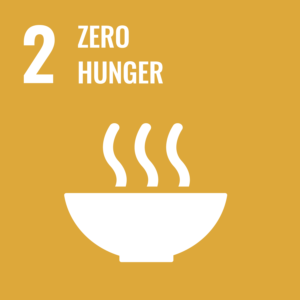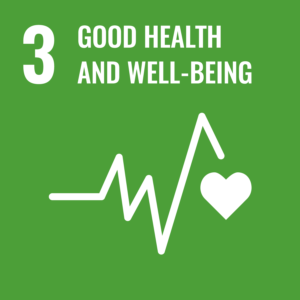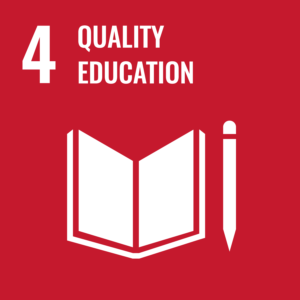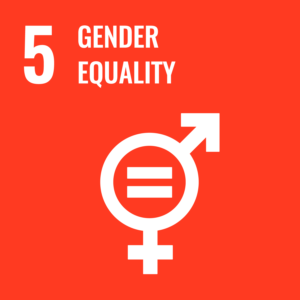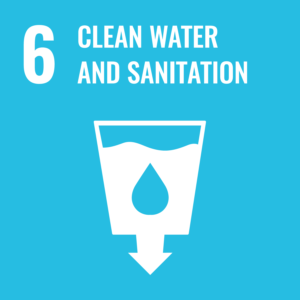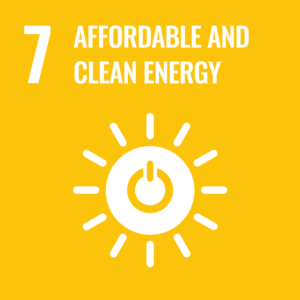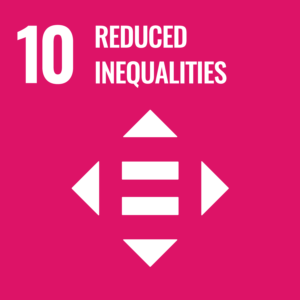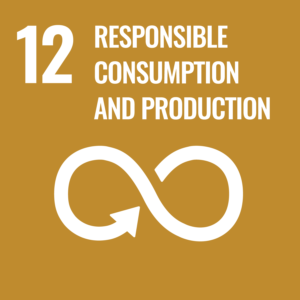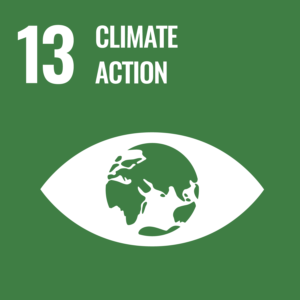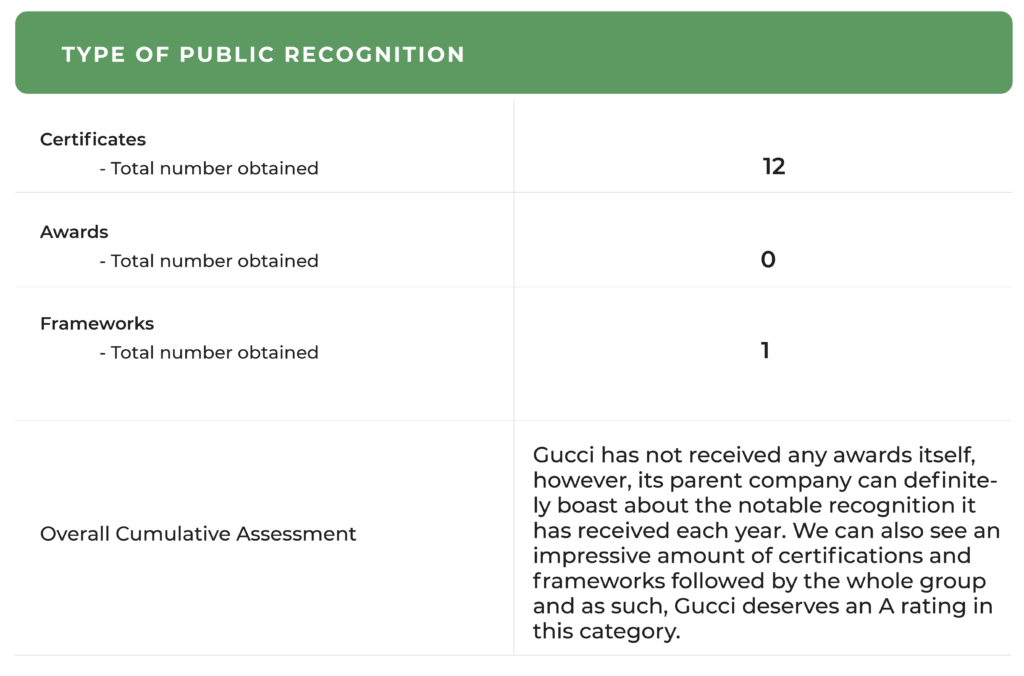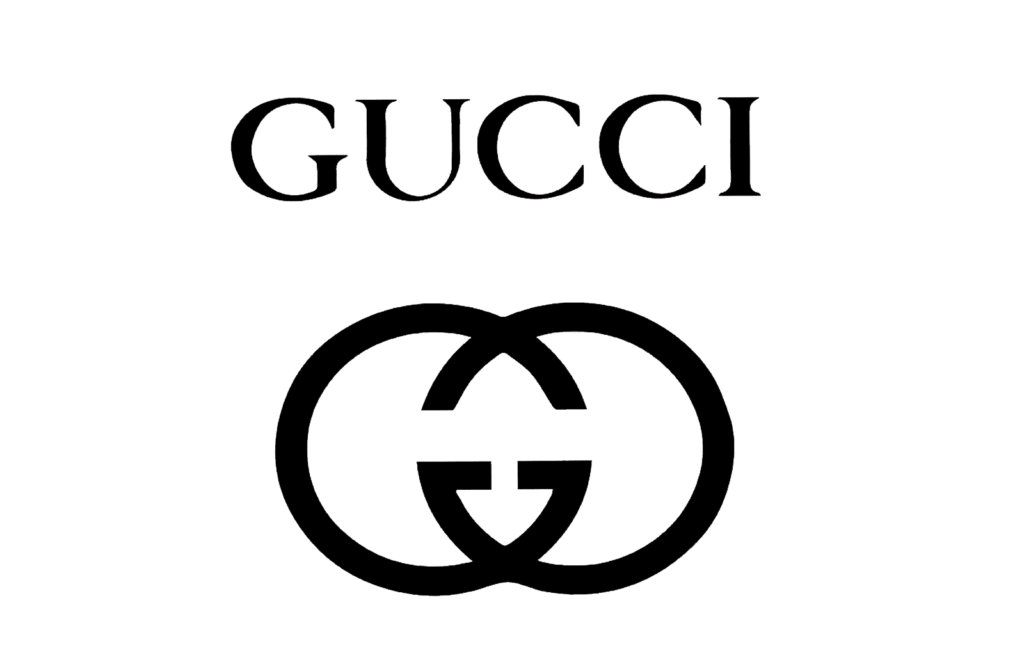
RATING

Positive
SECTOR
Fashion
Chief Sustainability Officer
Stock Exchange and Ticker
BIT: KER
Website
Contact
T: 39-0557-592-3333
E.mail: N/A
Listing
- #31 World’s Most Valuable Brands (2020)
- #7 Corporate Knights
Awards
– see mother company Kering
Revenue
€9,731 M
Market Capitalisation
€58.407 B
Employees
20,911
Content source
- Impact Report 2021 – Gucci Equilibrium
- GUCCI LIMITED gender pay gap data for 2021-22 reporting year – GOV.UK
- 30 Reviews of Gucci.com | Sitejabber.
- GUCCI LIMITED gender pay gap data for 2021-22 reporting year – GOV.UK
- Gucci – Sustainability Rating – Good On You
- Kering SA (KER.PA) Stock Price, News, Quote & History – Yahoo Finance
- Gucci Headquarters Address (Global and US), HQ Phone Number, and CEO Email Address
- Gucci’s sustainability strategy
- Wikipedia
- Gucci – Sustainability Facts, Rating, Goals | Panaprium
Gucci Sustainability Report
Evaluation of Gucci
Parent company of Gucci, Kering, since 2012 has been annually measuring and monitoring its progress in becoming more responsible as a Group, presented as Environmental Profit & Loss report. The report may even be one of its kind, presenting the distribution of the Group’s impact across the supply chain. Nevertheless, what we find is missing the most in the report, are ESG data metrics compared throughout the years. What is more, its sustainability governance is intertwined throughout the whole group, employing more than 60 people in this field. Remuneration of the Chairman and CEO, and of the Group Managing Director is tied to ESG criteria for 30% of the annual bonus and 20% of the LTIP.
Even though in Gucci’s report we distinguished only a few targets, we can find more of them presented by Kering. Overall, we are positively surprised to find such a comprehensive report by Kering, followed by an individual Gucci report. Eliminating waste and pollution, cycling goods and resources, and regenerating nature—form the foundation of Gucci’s core values. They’ve also avoided producing 15,730 kg of garbage and 1,085 tons of carbon dioxide emissions, eliminated 253 tons of leather scraps, and conserved 9.5 million liters of water. They also succeeded in receiving notable certifications.
The firm is definitely making progress in accordance with its goals, even though we would wish to see ESG numbers in regards to water withdrawals and waste diverted from landfills. If they continue to grow at this rate and implement bold recycling and waste diversion policies, Gucci and the Group would receive an A rating and may become a leader in this industry in the years to come.
Sustainability Scorecard
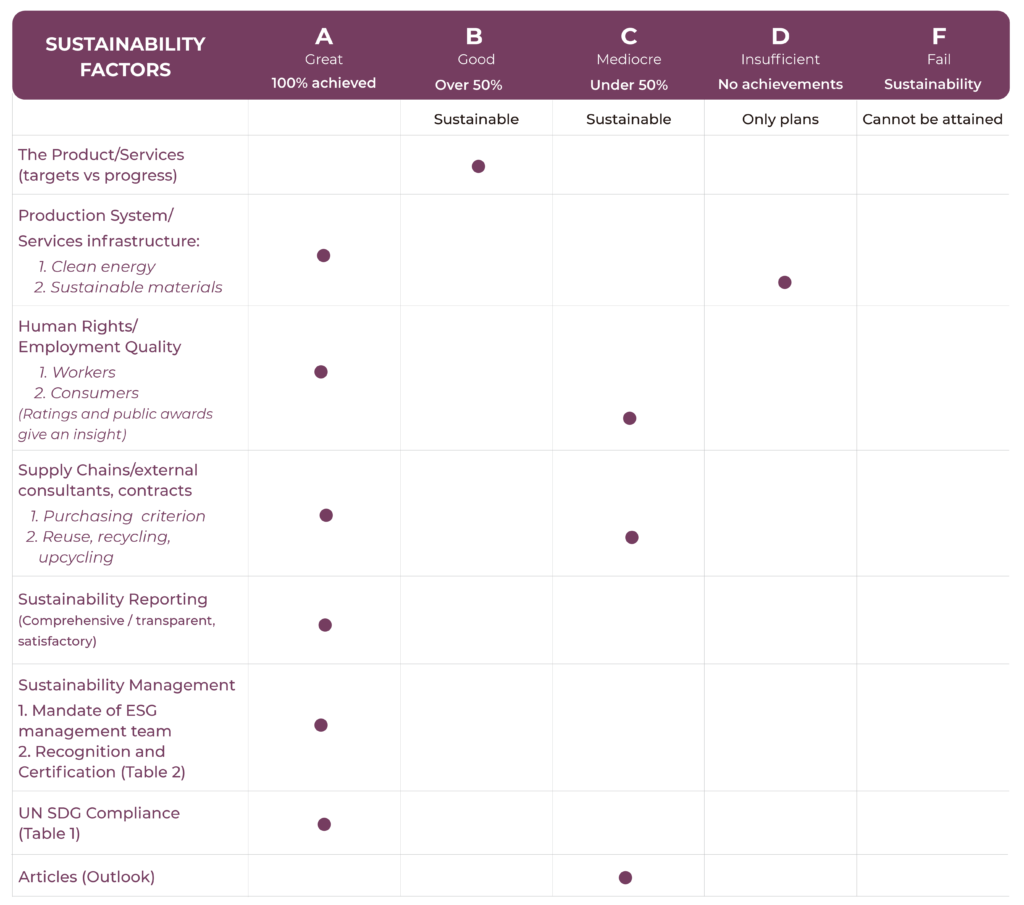
Gucci Company Activity
Influential, innovative and progressive, Gucci is reinventing a wholly modern approach to fashion. The House has redefined luxury for the 21st century, further reinforcing its position as one of the world’s most desirable fashion houses. Eclectic, contemporary, romantic—Gucci products represent the pinnacle of Italian craftsmanship and are unsurpassed for their quality and attention to detail.
Gucci is part of the Kering Group. A global Luxury group, Kering manages the development of a series of renowned Houses in Fashion, Leather Goods, Jewellery and Watches.
Gucci Sustainability Activity - As per company declarations
At Gucci, they are moving forward into the coming decades with an ongoing commitment to reinforce their culture of purpose, demonstrating their values through innovative pathways towards social and environmental sustainability. Powered by creativity and collaboration, they are reducing their environmental impact and helping to protect nature, while supporting people’s rights and championing inclusivity and respect, so that everyone in global Gucci community is free to express their authentic, diverse selves.
Their long-term efforts to design a more sustainable business model was amplified in 2015 when they first announced the 10-year “Culture of Purpose” sustainability strategy, underpinned by a series of targets to achieve by 2025 focusing on people and planet.
To chart their progress towards a more sustainable future Gucci uses Environmental Profit and Loss (EP&L) accounting, which was pioneered by their parent company Kering. Not only can they use this as a benchmark year-over-year, it allows to fully understand their environmental impacts at every stage of their supply chain and then transparently share this with their stakeholders.
Certificate & Labels, Standards and Frameworks
- UN LGBT Business Conduct Standards
- Science Based Target initiative (SBTi)
- Sustainability Accounting Standards Board (SASB)
- Task Force on Climate-related Disclosures (TCFD)
- UN Global Compact Communication on Progress
- FashionPact
- RE100
- RJC Chain of Custody certified, Fairtrade and Fairmined-certified artisanal gold
- Dedicated Sustainable Innovation Lab (SIL) for Watches & Jewelry since January 2020
- SA8000
- ISO 14001
- ISO 50001
- ISO 45001
- 66 LEED certified stores
- OCS
- GOTS
- GRS
- RDS
- TDS
- RWS
- ZQ Merino
- FSC
Gucci in the news: Press Reviews and Social Media
The Brands: How Gucci speeds up on eco-friendliness
The House of Gucci achieved a 44% reduction in overall environmental effects and a 47% reduction in greenhouse gas emissions using 2015 as a baseline, exceeding its 2025 reduction target four years earlier, according to the latest Environmental Profit and Loss (EP&L) figures. The corporation released its first Gucci Equilibrium Impact Report in June 2021, along with its most current findings and its future objectives. Together with Italian social cooperatives and nonprofit groups, it salvaged and recycled about 27 tonnes of leather scraps between 2018 and 2020. According to Gucci’s latest Environmental Profit and Loss (EP&L) figures, the House of Gucci has reduced its overall environmental impacts by 44% and its greenhouse gas emissions by 47% since 2015, exceeding its 2025 reduction objective four years earlier. The first Gucci Equilibrium Impact Report, together with the most current findings and the company’s future objectives, were all published in June 2021. In partnership with Italian nonprofits and social cooperatives, it salvaged and recycled about 27 tonnes of leather waste between 2018 and 2020.
The Italian fashion brand already possesses the LEED (Leadership in Energy and Environmental Design) accreditation, a mark of outstanding sustainability and a certification for buildings that is widely recognized. In its retail locations, corporate headquarters, and manufacturing facilities, Gucci used 93% green and renewable energy in 2020. By 2022, the firm aims to use only renewable energy for all of its direct activities, including all of its retail locations. Gucci has saved 59,200 tons of CO2 in 2019 and 65,000 tons of CO2 in 2020 by switching from non-renewable energy from from fossil fuels to energy derived from renewable sources. All out-of-production textiles and leathers are recycled or repurposed elsewhere, and all accessories are designated for recycling.
Gucci has upgraded 67% of its retail locations to LED lighting, and all newly constructed stores are built with this green lighting. To assist decrease energy consumption, the company has also gradually installed Building Management Systems (BMS) in its flagship locations. Building management systems (BMS) provide control of the lighting, ventilation, heating, and cooling systems. 23 Gucci locations now have the BMS system installed.
https://www.hausvoneden.com/lifestyle/news-gucci-foerdert-umweltschutz-durch-gucci-off-the-grid/
The Gucci Circular Lines effort to advance the circular economy has its inaugural collection, Gucci Off The Grid. A cutting-edge cleaning and regeneration process is used to make the sustainable and 100% recycled nylon fiber known as ECONYL®.
The yarn’s environmental scorecard is also impressive: 57.100 metric tons of CO2 emissions are avoided during manufacture when compared to conventional production techniques. The material was also selected by Gucci for their sustainable line. This seeks to encourage an ecologically conscious lifestyle and reduce CO2 emissions by focusing on recycled, regenerated, ecological, and sustainable materials.
The high-end label maintains its identity in terms of design and is made of ECONYL® or another biodegradable substance. Gucci has included a unique function to its app to commemorate the collection’s debut. It serves as a reminder that we must respect the environment and that many decisions should be guided by eco-friendly principles. The high-end label stays loyal to itself in terms of design: the sustainable designer items are decorated with the iconic “GG” jacquard, despite the fact that the whole product line is composed of either ECONYL® or other recyclable, biodegradable materials.
Gucci Environmental Impact Reduced by 21% Ahead of 2025 Targets – WWD
Between 2015 and 2025, the Italian high-end fashion brand will cut down on its overall environmental effect by 40%. Additionally, it has promised to cut its greenhouse gas emissions by 50% by 2025. Given that its 2019 findings show a 39 percent reduction for the house’s total effects and a 37 percent reduction in GHG emissions alone, Gucci is ahead of schedule and already close to reaching its 2025 objectives. Gucci lowered its total footprint by 21% and its GHG emissions by 18% year over year, relative to growth, as compared to its 2018 EP&L figures (from a 2015 baseline). The outcomes are a result of Gucci’s efforts to push improvements throughout its supply chain, such as increasing the use of recycled raw materials and organic fibers in its collections and incorporating precious metals from responsibly sourced mines into jewelry and hardware, like 100 percent ethical gold. Gucci is motivated by the problems that essentially shape and mold our society’s destiny. The Gucci Equilibrium line’s upcoming iteration is intended to address a diverse audience that stands up for important causes. The corporation accepts responsibility for all GHG emissions resulting from its own activities and the complete supplier chain. Gucci made the move to green energy, and by 2020, all of its factories, offices, warehouses, and retail locations will be powered by 83 percent renewable energy. This is accomplished through reducing GHG emissions and finding natural ways to offset the residual emissions. The Italian design brand has made investments totaling $8.4 million in Kenya, Indonesia, Cambodia, and the Peruvian Amazon. Gucci began with Chime for Change and added Tirado’s Changemakers Agenda program. Through these initiatives, Gucci has contributed over $1.5 million to charitable groups that “seek to assist and promote disadvantaged populations, including the LGBT community” and have provided scholarships.
Highlights from Gucci Sustainability Report
Achievements
- %99 of the roses used in skincare and makeup are organic
- Since 2018, thanks to the Absolute recharge capsules, they have already avoided using 250 tons of glass
Weaknesses and Setbacks
- Decrease in the GHG intensity instead of direct emissions
Targets vs Progress Reported
| Target | Results reported |
|---|---|
| To achieve 100% metal or chrome-free tanning across collections by 2025 | - Starting from 0.2% they reached 40% of total leather production in 2021, up from 26% in 2020 - They’ve scaled up metal and chrome-free leather from 0.2% to 40% of our total leather production as of 2021 |
| Achieving gender pay equity for equivalent positions by 2025 | Women’s mean hourly pay is 2% lower than men’s |
| - Attaining 100% traceability for raw materials by 2025 |
95% overall traceability |
| Reducing total footprint by 40% and greenhouse gas emissions by 50% by 2025 | - A -46% GHG emissions intensity reduction - 47% decrease in greenhouse gas emissions taking 2015 as a baseline, but 22% increase since 2020 |


